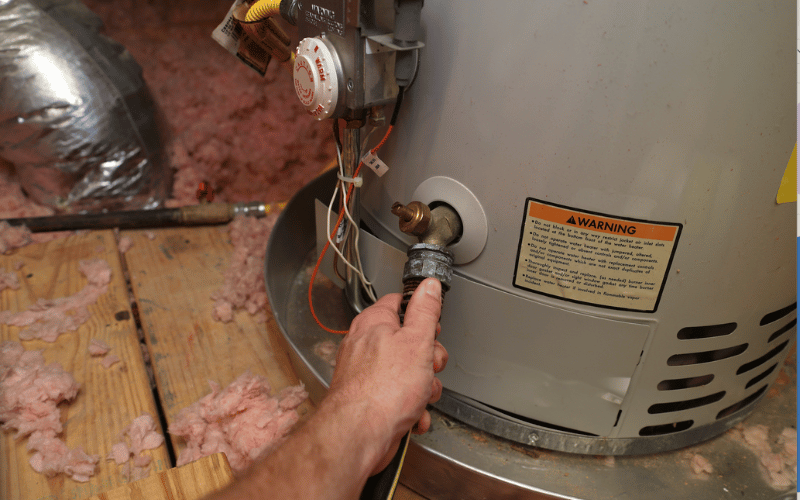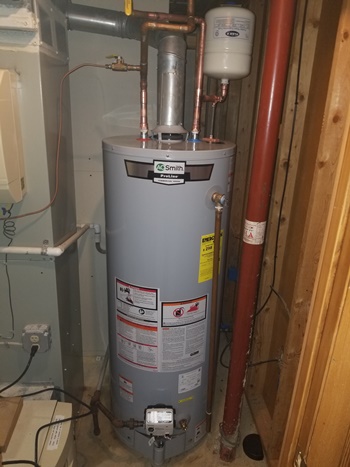What are your thoughts about Water Heater Maintenance Tips You Can't Afford to Forget?

Hot water is necessary for everyday convenience, whether it's for a revitalizing shower or cleaning dishes. To ensure your hot water system runs effectively and lasts much longer, normal upkeep is vital. This write-up supplies practical suggestions and understandings on just how to keep your home's hot water system to prevent disturbances and costly repair services.
Introduction
Preserving your home's hot water system might seem challenging, however with a few simple steps, you can ensure it operates efficiently for years to come. This overview covers every little thing from understanding your hot water system to DIY maintenance tips and knowing when to call in professional help.
Value of Preserving Your Hot Water System
Regular maintenance not just expands the life-span of your hot water system yet likewise ensures it operates efficiently. Neglecting upkeep can bring about lowered efficiency, greater power expenses, and even premature failing of the system.
Indicators Your Hot Water System Demands Upkeep
Knowing when your hot water system requires interest can avoid major concerns. Watch out for indicators such as inconsistent water temperature, strange sounds from the heating system, or rustic water.
Flushing the Water Heater
Purging your water heater eliminates debris build-up, boosting performance and prolonging its life.
Checking and Replacing Anode Rods
Anode rods protect against corrosion inside the tank. Inspecting and replacing them when broken is vital.
Complex Problems Needing Expert Aid
Examples consist of major leakages, electrical troubles, or if your hot water heater is regularly underperforming.
Regular Expert Upkeep Perks
Professional upkeep can include thorough evaluations, tune-ups, and ensuring conformity with safety criteria.
Examining and Adjusting Temperature Level Settings
Readjusting the temperature setups makes sure optimum performance and safety.
Do It Yourself Tips for Upkeep
You can carry out numerous maintenance jobs yourself to keep your warm water system in top condition.
Checking for Leakages
On a regular basis inspect pipes and links for leaks, as these can cause water damage and higher costs.
Understanding Your Warm Water System
Prior to diving into maintenance jobs, it's valuable to recognize the basic elements of your warm water system. Typically, this includes the hot water heater itself, pipelines, anode rods, and temperature level controls.
Monthly Upkeep Tasks
Regular regular monthly checks can assist capture small issues prior to they escalate.
Evaluating Pressure Alleviation Valves
Examining the pressure relief valve ensures it functions properly and stops too much stress buildup.
Insulating Pipes
Protecting warm water pipes decreases warm loss and can conserve power.
When to Call a Specialist
While do it yourself upkeep is useful, some problems call for specialist proficiency.
Final thought
Routine maintenance of your home's hot water system is vital for effectiveness, durability, and expense financial savings. By adhering to these pointers and recognizing when to look for specialist aid, you can guarantee a dependable supply of hot water without unexpected interruptions.
Water Heater Maintenance: The Basics
Maintaining your water heater will ensure it operates efficiently and has a longer lifespan. Neglecting regular maintenance can lead to costly repairs and an even bigger chunk of your savings if you have to replace it sooner than necessary. But there’s good news: Most water heater maintenance tasks are relatively simple and easy for homeowners with basic DIY skills.
Flush the Water Heater
Over time, sediment and minerals can build up in the tank, reducing its efficiency and potentially causing damage. To flush the tank, turn off the power or gas supply, attach a hose to the drain valve near the bottom and open the valve to drain the water until it runs clear. Ideally, flush the tank annually.
Replace the Anode Rod
The anode rod is a sacrificial metal rod that helps prevent corrosion inside the tank. Inspect and replace it every three to five years or per the manufacturer's recommendation. To replace the anode rod, turn off the power or gas supply, drain a few gallons of water from the tank, unscrew the old rod and replace it with a new one. If the anode rod is significantly corroded or covered in calcium buildup, it's a sign the water heater may need to be replaced soon.
Tune-Up
A yearly tune-up can help identify potential issues and ensure your water heater operates at peak efficiency. This typically involves checking the thermostat, burner assembly (for gas heaters) and any other components specified by the manufacturer. During a tune-up, the technician may also clean the burner and adjust the pilot light (for gas heaters) or examine the heating elements (for electric heaters).
How to Maintain Your Water Heater
Insulate the tank. Insulating the tank can improve energy efficiency and reduce heat loss, saving you money on energy bills. You can purchase precut insulation blankets designed specifically for water heaters or use standard fiberglass insulation wrapped securely around the tank. Check the temperature. The recommended water temperature for most households is around 120 degrees Fahrenheit (49 degrees Celsius). Higher temperatures can increase energy costs and potentially cause scalding. Use a kitchen thermometer to check the temperature at the faucet nearest the water heater. Monitor water pressure. Excessive water pressure can strain the water heater and cause leaks or even tank failure. Install a pressure-reducing valve if necessary. The ideal water pressure range is between 60 and 70 PSI (pounds per square inch). Test the temperature and pressure (T&P) relief valve. The T&P relief valve is a safety feature that releases pressure if the tank gets too hot or the pressure builds up too high. Test it annually by lifting the lever and allowing a small amount of water to release. Replace the valve if it doesn't release water or reseal properly. Check for leaks. Regularly inspect the tank, pipes and fittings for leaks or corrosion. Deal with issues promptly to prevent further damage. Even a small leak can lead to significant water damage over time. Consider a tankless water heater. If your traditional tank-style water heater is nearing the end of its lifespan ( typically 10 years), consider replacing it with a tankless water heater. These units heat water on demand, reducing standby energy losses and potentially saving you money on your energy bills. Schedule professional maintenance. While homeowners can perform many water heater maintenance tasks, it's still a good idea to schedule professional maintenance every few years. A plumber or HVAC technician can thoroughly inspect the unit, identify potential issues and ensure it operates safely and efficiently. https://www.homeserve.com/en-us/blog/home-improvement/hot-water-heater-maintanence/

As a fervent person who reads about Tips For Maintaining Your Hot Water Heater, I assumed sharing that excerpt was really helpful. Those who enjoyed reading our blog posting kindly be sure to share it. Thanks for your time invested reading it.
Try Here